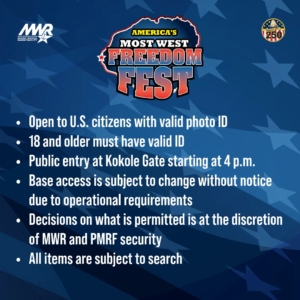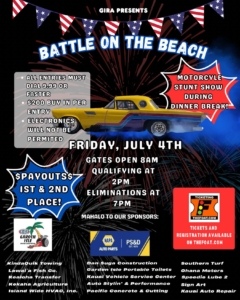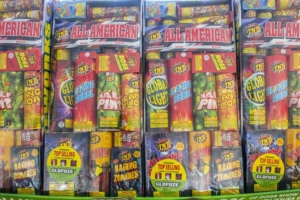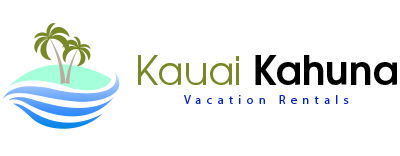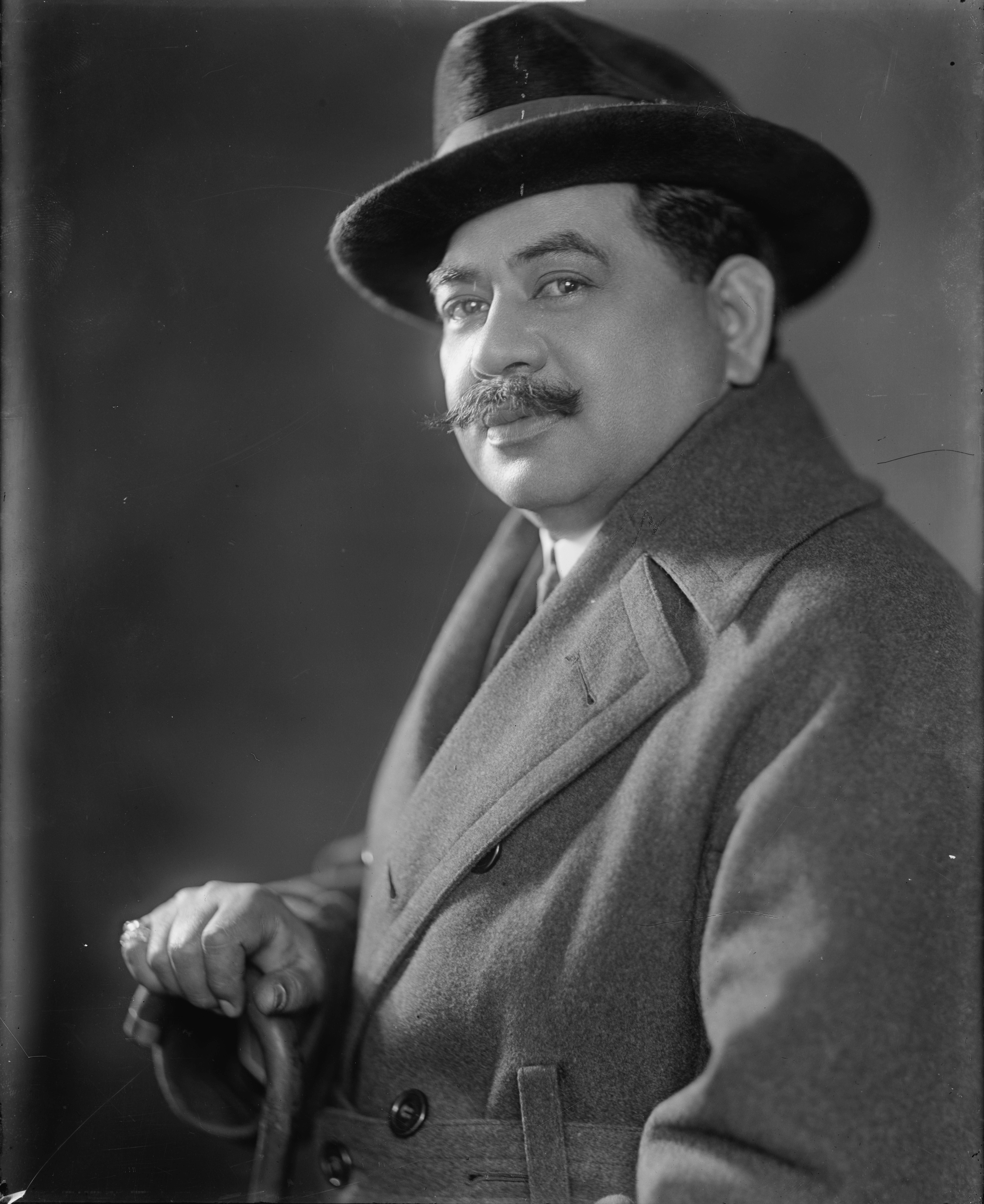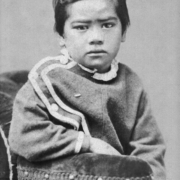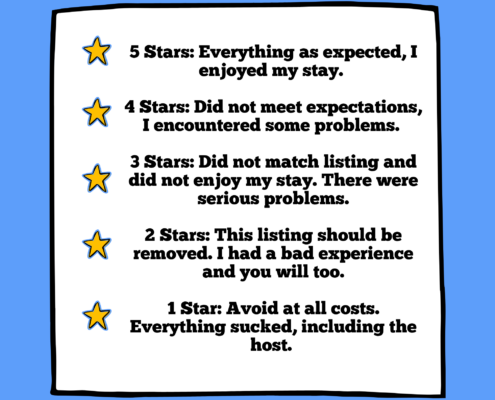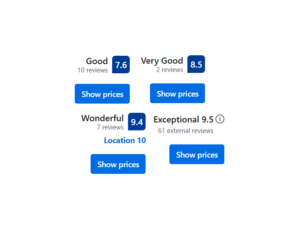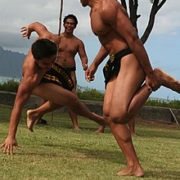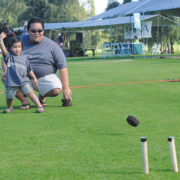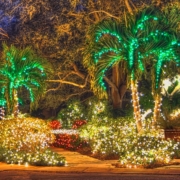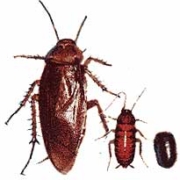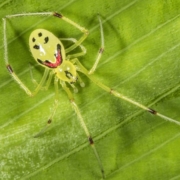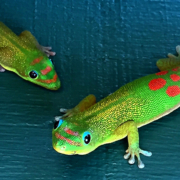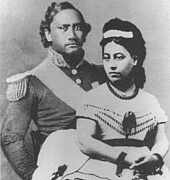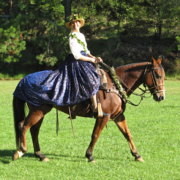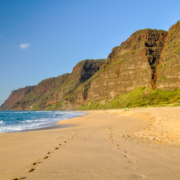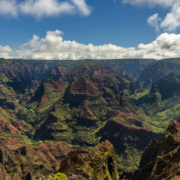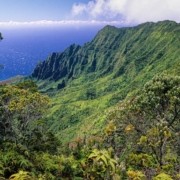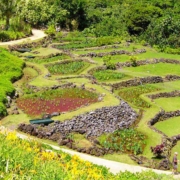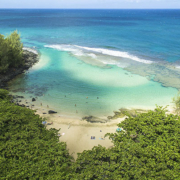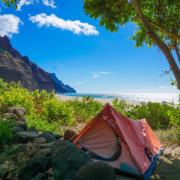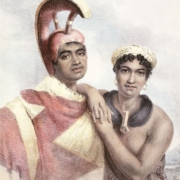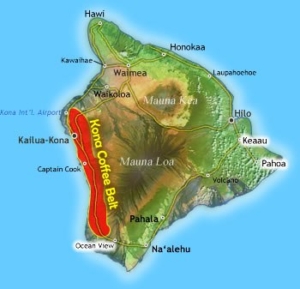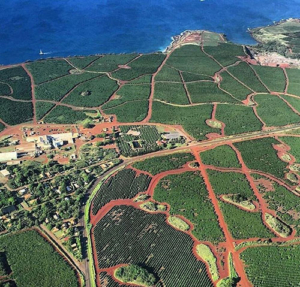Like most working adults, unless we start our mornings with a delicious dose of caffeine, the rest of the day is a wash. And while it’s certainly cheaper to brew your own coffee at home and try and doctor it up yourself, it’s way less fun, and for some reason it never tastes as good as when someone else does it for you. That means we’ve become pretty well versed in the world of Kaua’i’s coffee shops and cafes, and today we’ll be recommending a few of our favorites. From whipped feta-topped bagels to souvenir mason jars, every coffee shop on here has something that makes them stand out, but the uniting factor is that they all have really good coffee!
Nā Pali Art Gallery & Coffee House (Hanalei): for Ocean-Front Sips, Cool Local Art
Tucked away on-site out at Hanalei Colony Resort on the far North Shore, Nā Pali Art Gallery & Coffee House is a cute little shop with a lot to offer. The large selection of local artwork, jewelry, and shiny tchotchkes makes for fun perusing as you enjoy your coffee, but the real treat is taking your drink out back to sit and watch the waves crashing onto the shore just a few feet away. As far as scenery goes, this place pretty much has the best seats in the house.
What do we like? The blended spiced chai makes for a yummy pick-me-up on a hot day, and their vanilla latte is delicious and pairs well with wave-watching. For a one-stop breakfast experience you can grab one of their Bali Hai fruit smoothies and a bagel. For anyone staying on-site at Hanalei Colony Resort, the Nā Pali Gallery/Coffee House will be a godsend!
Wishing Well Coffee (Hanalei): for Acai Bowls, Nice Outdoor Seating, Cute Mason Jars
Next we have the crowd pleasing, consistently delicious Wishing Well Coffee & Tea House in Hanalei proper. Wishing Well sprouted a few years ago from what was originally just a shave ice truck, and has expanded into a small home goods/clothing store, and a cheerful open-air coffee shop. Wishing Well’s coffee beans are locally roasted down the street at Outpost Coffee (another solid option for your morning brew), and every iced drink, smoothie, chia pudding, and overnight oats comes in a lovely branded mason jar that you get to keep. You can also bring the mason jars back for $1 off your next order, but we like to keep them to use like tupperware!
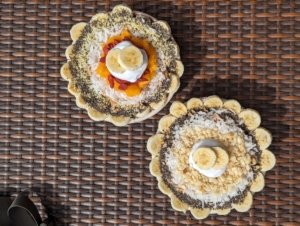
The Works Bowl (left) and The Good Times Bowl (right) from Wishing Well in Hanalei.
What do we like? The Good Times Bowl is huge, delicious, and surprisingly refreshing. If you like acai bowls, you’ll love this one, especially the little pat of haupia (whipped coconut cream) on top. A regular old hot latte from Wishing Well is reliably delicious, and for cold coffees we like an iced latte with macadamia milk and macadamia syrup. If you’re into specialty drinks, Lili’s Fav is an excellent spin on an iced matcha, and their Refreshing Tea is yummy and easy on the tummy.
Outpost Coffee (Hanalei): for Grab & Go, No-Frills Coffee
Just down the street from Wishing Well, hidden away in the back of the Hanalei Market is Outpost Coffee. While they do have a small, rotating selection of vegan and organic pastries and baked goods, the main attraction here is the coffee (though, on Fridays and Saturdays they do have delicious breakfast burritos!). If you’re a coffee purist and enjoy simpler brews (black coffee, cortados, plain lattes) this is the place for you. Outpost roasts their own beans, and the baristas are excellent, which means the flavor of the coffee here is smooth, mellow, and slightly sweet. They do offer some fun flavored drinks as well, so there should be something for everyone!
What do we like? A regular hot latte from Outpost has never done us wrong. If you’re looking for something more adventurous, their nitro cold brew is excellent as well, and the Hamakua Mac Nut latte is a great option for those of us that prefer sweeter coffee drinks!
Trilogy Coffee (Kilauea): for Vegan Pastries, Interesting Specialty Drinks, Artisan Treats
Trilogy Coffee is one of our favorite spots on the island, and a real hidden gem (if anywhere can be hidden on a small island). The small shop doesn’t have much seating, but it’s right by a little grassy clearing that makes for a great spot to sit and enjoy Kaua’i’s beautiful weather. While the coffee and baked goods here are delicious, Trilogy also has an extensive selection of interesting, health-focused specialty drinks that use ingredients like lion’s mane mushrooms, ashwagandha, and maca root powder. You’ll also find a selection of tinctures, artisanal chocolates, adaptogen powders, and other various sundries for purchase.
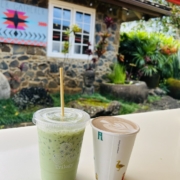
An iced Mintcha Chip and regular hot latte with macadamia nut milk at Trilogy Coffee in Kilauea.
What do we like? All of their standard coffee drinks are great. For a little something different we like to sub macadamia nut milk for dairy milk; it adds a hint of sweetness and creaminess without needing any syrups. The Mintcha Chip is a delightful take on a matcha latte, and their Witch’s Brew adaptogen drink is different. surprising, and delicious! We also enjoy their selection of vegan, gluten-free, and organic pastries and baked goods, especially the Key Lime Kake.
Collab Cafe (Kapa’a): for Farm-Fresh Ingredients, Fresh Sourdough Loaves, Ice Cream!
Speaking of Outpost Coffee, they teamed up with a bunch of other small, local businesses and all created Collab Cafe. Not only can you watch Outpost’s locally grown coffee beans being roasted on site, you can also enjoy delicious brunch offerings from Hola Aloha on fresh-baked bread, using locally sourced ingredients. If you come on Wednesday or the weekends, you can also try to snag a loaf of hot, fresh sourdough bread, and if you miss the bread you can enjoy a few scoops of freshly-churned ice cream from Rainbow Road.
What do we like? The Mushroom Toast is great, and uses trumpet mushrooms that are locally foraged on Kaua’i. The Macadamia Pesto Toast is also delicious, especially the homemade chili crisp they top it with. As far as coffee goes, the same recommendations for Outpost apply! A regular hot latte will alway be a treat, and the matcha lattes at this particular location are excellent as well.
Java Kai/Kai Bar (Kilauea, Kapa’a, Kōloa): for Sit-Down Breakfast, Fun Rotating Specials
Up next we have Java Kai, which has been so successful they’ve opened up two more locations in addition to their original Kapa’a cafe. Whether you’re staying down South in Poipu, up North in Princeville, or near the airport in Lihue, you’re never more than a few minutes away from great coffee, delicious breakfast and lunch, and laid back ambiance that’ll encourage you to linger over your meal. Like many coffee shops on Kaua’i, Java Kai roasts their own beans, and they also bake all their own pastries and baked goods fresh every morning.
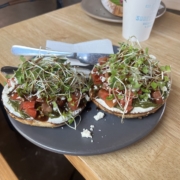
The Feta Mo’ Betta bagel at Kai Bar in Kilauea. Enjoy with an iced macnut latte for best results!
What do we like? Everything at Java Kai/Kai Bar is delicious. The Surfer Girl Sandwich and Feta Mo’ Betta are a hit for breakfast, and the Kaua’i Cubano makes for a great lunch. In terms of coffee, we’re always going to recommend a mac nut latte, but the rotating menu of seasonal specials are the go-to! This season’s strawberry milk matcha has been a huge hit.
Aloha Roastery (Wailua, Lihue): for A Simple Coffee & Pastries Cafe
Aloha Roastery is one of the most respected names on the island when it comes to good coffee. They roast their own beans in-house, offer reasonably priced bags of single-origin beans that make a great souvenir, and they can be found in several spots across the island. They have a small assortment of fresh pastries every day, and their drink menu is uncomplicated. This is a place that celebrates the pure deliciousness of plain coffee.
What do we like? We like to go with a simple hot latte or cortado at Aloha Roastery. The coffee is expertly roasted and smooth, and the espresso shots are pulled to perfection. This truly is a cafe that keeps it simple.
Kō Bakery (Puhi): for Extremely Delicious Pastries & Baked Goods, Kaua’i Coffee
Kō Bakery in Puhi (near Lihue) has garnered a faithful following for their delicious cakes and pastries, and they make some great coffee to pair with one of their lilikoi cranberry biscotti or pineapple coconut scones. They have a fairly large menu of fun specialty coffee drinks, in addition to the standard offerings, but you shouldn’t stop at Kō unless you’re ready to commit to a selection of their baked goods. Going just for the coffee would almost be a crime!
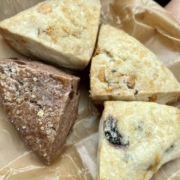
A selection of scones at Ko Bakery in Puhi! Liliko’i white chocolate and ginger pecan are two of our favorites.
What do we like? The Lilikoi Mocha is an interesting and delicious take on a classic. The tartness of the lilikoi goes very well with the flavors of their coffee and mocha syrup. The Guava Cake is one of their signature offerings, and you’d be a fool to visit without trying a slice. The Haupia Lime cake is light, tart, creamy, and fabulous. Grabbing some of their biscotti and scones to dunk in your morning coffee during your visit is also a great idea; really, anything you try here should be a slam dunk.
Kind Koffee Co. (Nawiliwili, Kalaheo): for Light Bites, Friendly Staff, Cute Coffee Truck
Although Kind Koffee Co. has a brick-and-mortar location in Nawiliwili that’s excellent, we love the little blue truck inside Warehouse 3540 in Kalaheo. You’ll be getting the same delicious coffee, fresh avocado toast, and outstanding service in both places, but getting to walk around the Warehouse with your coffee and peruse all the other local vendors is too good an opportunity to pass up! Kind Koffee Co. is also a woman-owned business with a focus on sustainability and fresh ingredients – a mission we can get behind.
What do we like? The Hawaiian vanilla latte is a real treat, as is the hibiscus liliko’i lemonade. The deluxe avocado toast somehow tastes better than any other avocado toast, and the bagels are baked fresh daily on the island. Their menu of rotating seasonal specials is always a hit, and we recommend getting your hands on their mango matcha before it’s gone for good.
Little Fish Coffee (Kōloa): for 100% Locally Grown Coffee, Great Breakfast & Lunch
Little Fish Coffee down in Kōloa on the South Shore is an intimate little cafe serving up a mean cup of joe, and some delicious food to boot. All of their coffee comes from 100% Kaua’i-grown coffee beans, and their fairly extensive selection of acai bowls, sandwiches, and salads makes this a great one-stop-shop for breakfast or lunch. Be warned, though: this place is popular and lines can get long. Be sure to budget at least an hour for a laidback experience.
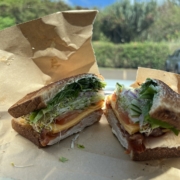
The Clubzilla from Little Fish in Koloa. It’s huge, fresh, and delicious!
What do we like? Down on the sunny South Shore, we like to switch it up with an iced latte, or a Banana Colada smoothie. As far as food goes, the Sunrise Acai Bowl is a fresh and delicious breakfast, and the breakfast bagel and Clubzilla both make for a filling and satisfying brunch or lunch.
Clearly, good coffee is in abundance on Kaua’i, and exploring as many cafes as you can while on vacation is a great way to see different parts of the island and support local businesses. This list is only the tip of the iceberg, but if we named every cafe worth checking out on the island, this blog would be a novel, and you wouldn’t be able to discover any unsuspected delights for yourself! Of course, if you’re a true coffee lover on Kaua’i, you should always make time for a visit to the Kaua’i Coffee Plantation to tour their estate, learn about the growing operation, and taste their different roasts and blends. It makes for a wonderful afternoon, and afterwards you’ll have a greater appreciation for all the sweet sweet java you’ll enjoy at one of these wonderful coffee shops. Happy sipping!
